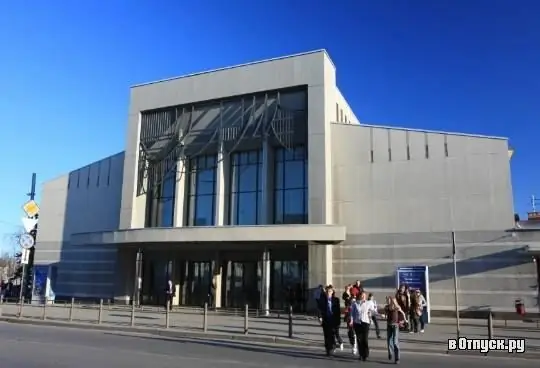
Description of the attraction
The National Theater of the Republic of Karelia is the State Drama Theater in Petrozavodsk. This is the only Finnish theater in Russia where performances are staged in Karelian, Russian and Finnish. In 1918 this building housed the headquarters of the Red Guard, then the Triumph Theater, and in 1965 the building was reconstructed, which greatly changed the appearance of the theater. After reconstruction in 2003, the building acquired its modern look.
The first national theater troupe began to work here in March 1921. It was organized by Finnish émigrés from the revolutionary ranks under the leadership of Viktor Linder, a former director and actor of Finnish theaters. Theatrical repertoire consisted of Finnish works of pre-revolutionary drama. The staging of the play "In the turning years", which reflected the real life of the border village, demanded considerable efforts from the artists.
For the organization of the Karelian National Theater, a candidate was chosen in the person of Ragnar Nyustrem, a famous theater figure and poet of that time. The first actors of the theater were graduates of the Karelian faculty of the Art Studio in the city of Leningrad. The task of the national theater was to acquaint the population with the world drama, the representatives of which were: M. Gorky "Enemies", B. Lavrenev "Rift" and many others. In the fall of 1937, the theater ceased its work under the slogans of the struggle against bourgeois nationalism. The theater's activity was restored in 1940 after the Karelian SSR was transformed into the Karelo-Finnish Soviet Socialist Republic.
In the post-war years, the Finnish theater became the leading one of all the national theaters of the former USSR, because it was only there that they began to use special headphones for simultaneous translation of words into Russian. As before, most of the productions consisted of translated Soviet plays. Plays by A. Afinogenov, Yu. Smuul, A. Korneichuk were staged in Finnish. Since 1968, Finnish directors have been attracted to theatrical performances. Famous directors began to cooperate with the theater: Timo Ventola, Kaisa Korhonen, Harri Liuksiala, who staged mostly Finnish plays. In 1982, the theater received the Order of Friendship of Peoples on the occasion of its 50th anniversary since its foundation.
From 1993 to 2003, the main theater director was the Honored Artist of Lithuania and art worker of the Karelian Republic Leonid Vladimirov. In 1997, the studio of the National Theater was opened at the Petrozavodsk State Conservatory. The artistic director of the studio was the theater director Arvid Zeland, who worked in this position until 2004.
As for the last most significant works of the national theater, it can be noted: "Autumn and Winter" based on the play by L. Nuren, "Playing Strindberg" based on the play by F. Dürrenmatt. Some of the actors who took part in the performances received the republican award "Onega Mask" for the performance of the best roles during the theatrical season. The play “Niskavuori” based on the play by H. Vuolijoki won the same prize only for the best director Andrei Andreev.
On June 24, 2003, after eight years of reconstruction, the Great Stage of the theater was opened, which was equipped with the most modern sound and light equipment. The big stage opened with the premiere of the play "Nummifars" based on the classic comedy of Finnish drama "Nummi's Shoemakers" by Alexis Kivi. In the period from 2003 to 2004, new productions appeared in the theater: "A Secret Date" directed by Oleg Nikolaenko, "Sakhalin's Wife" directed by Irina Zubzhitskaya, "Tartuffe" by Andrey Andreev. The production “Creation of the World. Songs One and Two”was recognized as the best performance of the Fifth International Festival of Finno-Ugric Theaters in Yoshkar-Ola. The production also won the Big Candle International Electronic Theater Festival.






